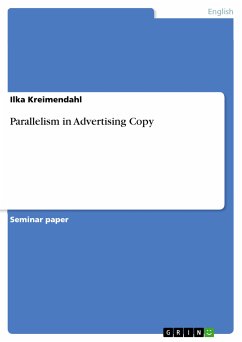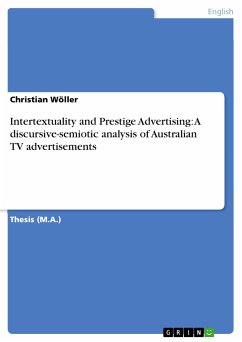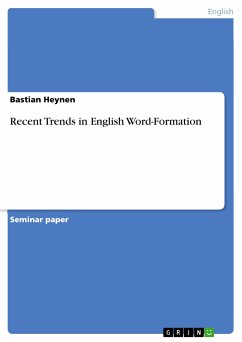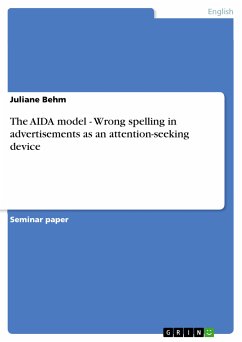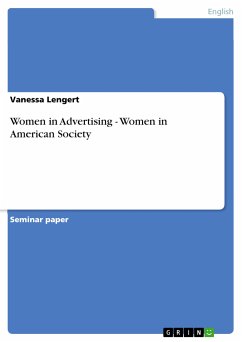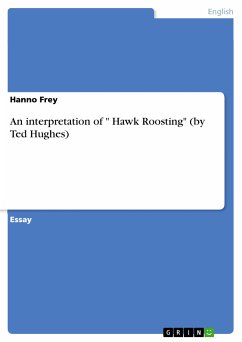Seminar paper from the year 2001 in the subject English Language and Literature Studies - Linguistics, grade: 3 (C), University of Kassel (FB Anglistics), course: Semiotics of Advertising, language: English, abstract: Semiotic analysis is the study of language, texts and communication. It shows how meanings are constructed and what these meanings are. This seminar paper will concentrate on the analysis of parallelism and recurrences in advertising copy. To begin with, I will give a short explanation of specific terms that are central to the paper and need clarification. In chapter three and four, the document will focus on the use of parallelism in spoken as well as in written discourse including a table with the possible constellations of correspondence, while the fifth chapter deals with the use of recurrence and parallelism in advertising copy. Furthermore, I will give several examples and present a few other parallel constructions that occur in advertisements. To conclude, the term paper discusses the question of paraphrasing and repeating as being patterns of style, ending with a summary of the results. The expression “advertising derives from the medieval Latin verb advertere” and means ‘to direct one’s attention to’ (Danesi 1995:11). Today advertisements are understood as “any type or form of public announcement intended to promote the sale of specific commodities or services” (ibd.). They are predominately used for commercial purpose; especially for the so-called consumer advertising where the intention of the ad is the marketing of a certain product. Commercials and advertisements function by means of persuasion – the messages are designed in a manner that influences the way the consumer perceives goods, a discovery that will help later on to understand the use of parallelism in advertising. [...]

